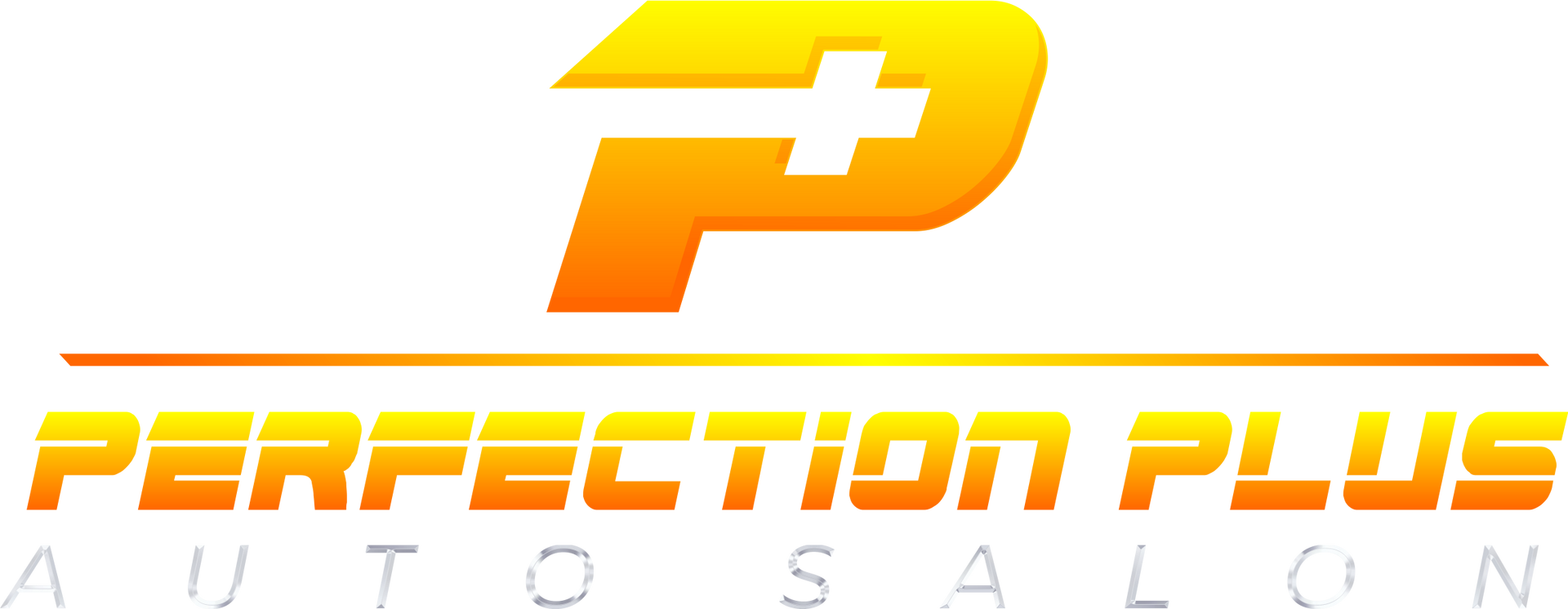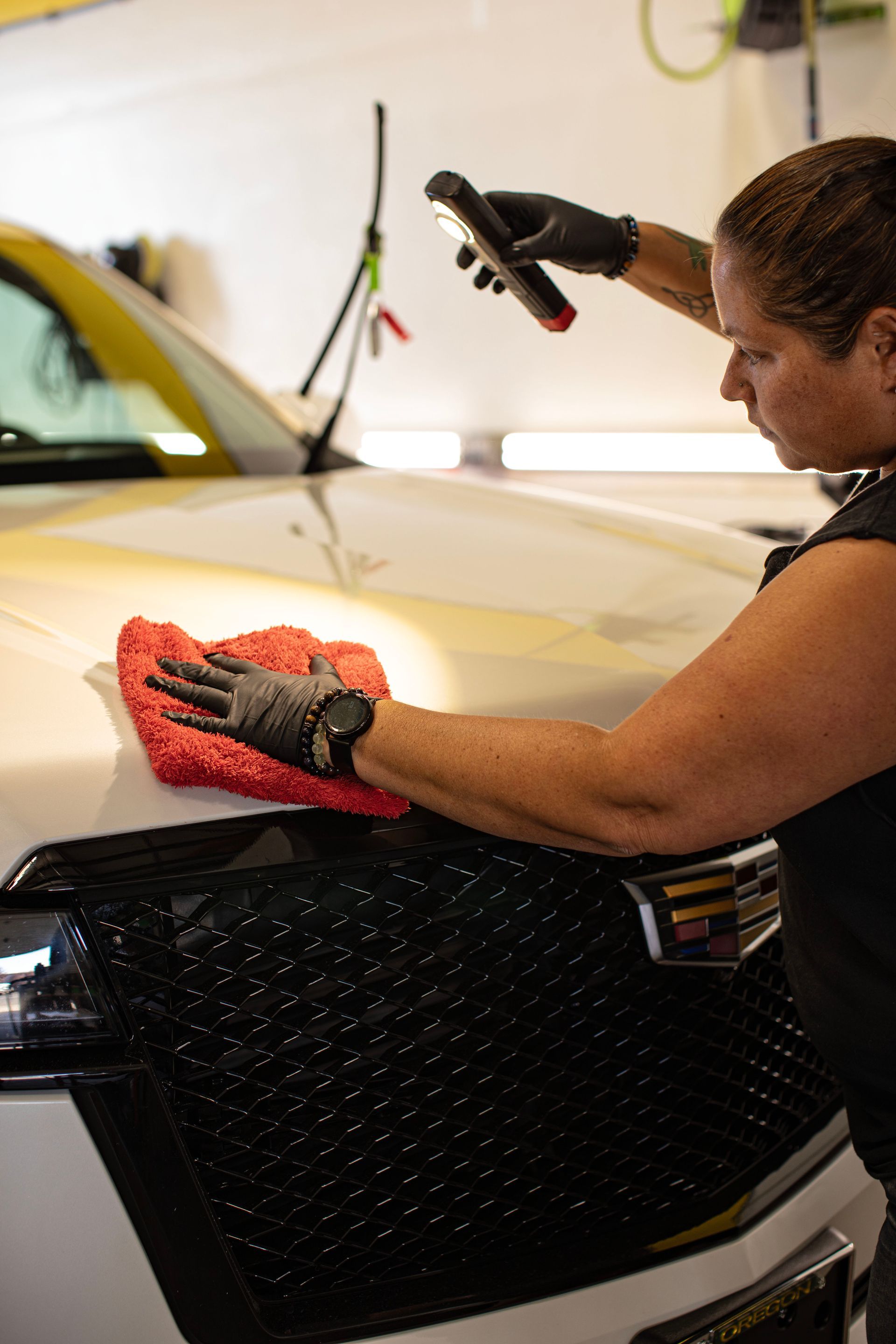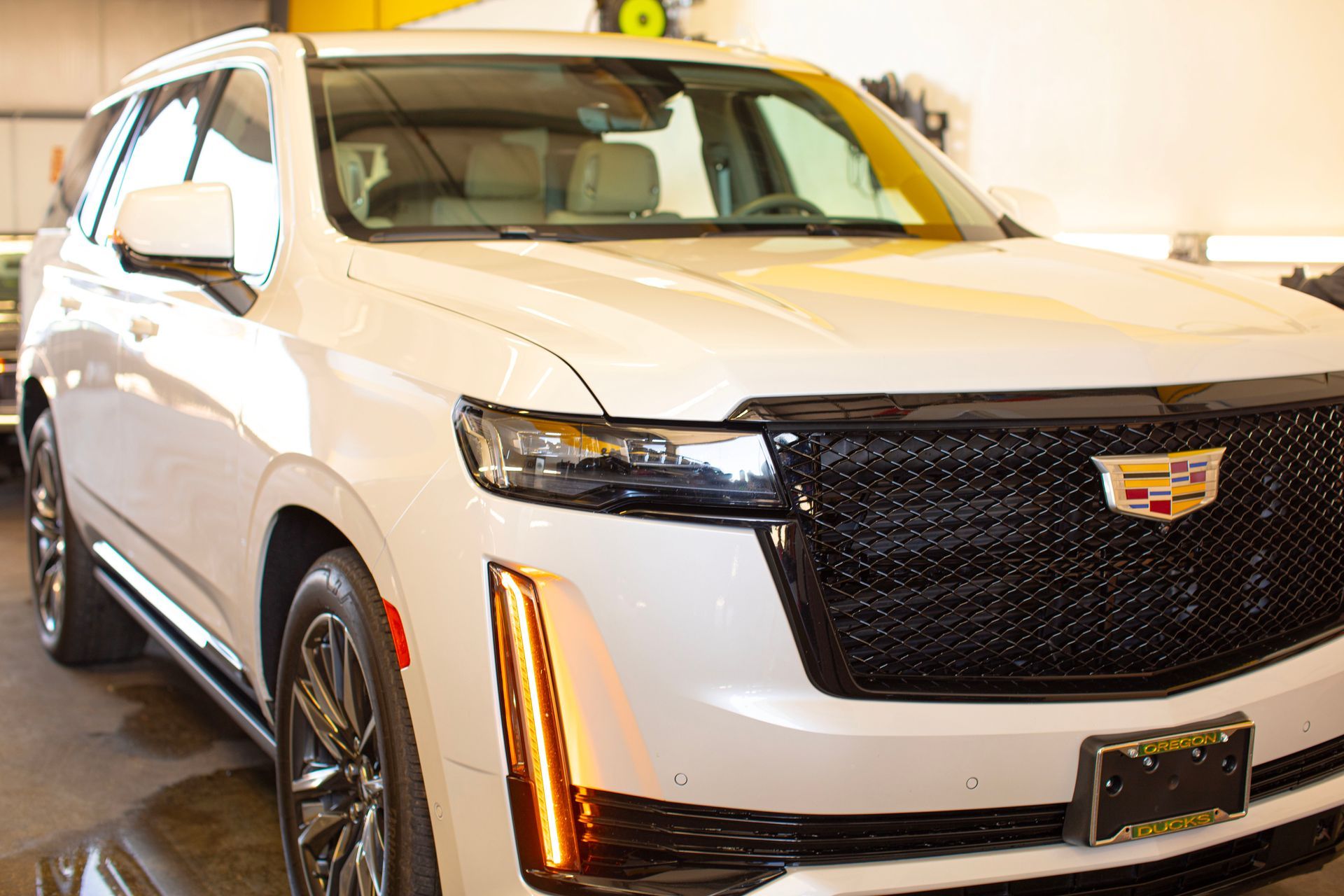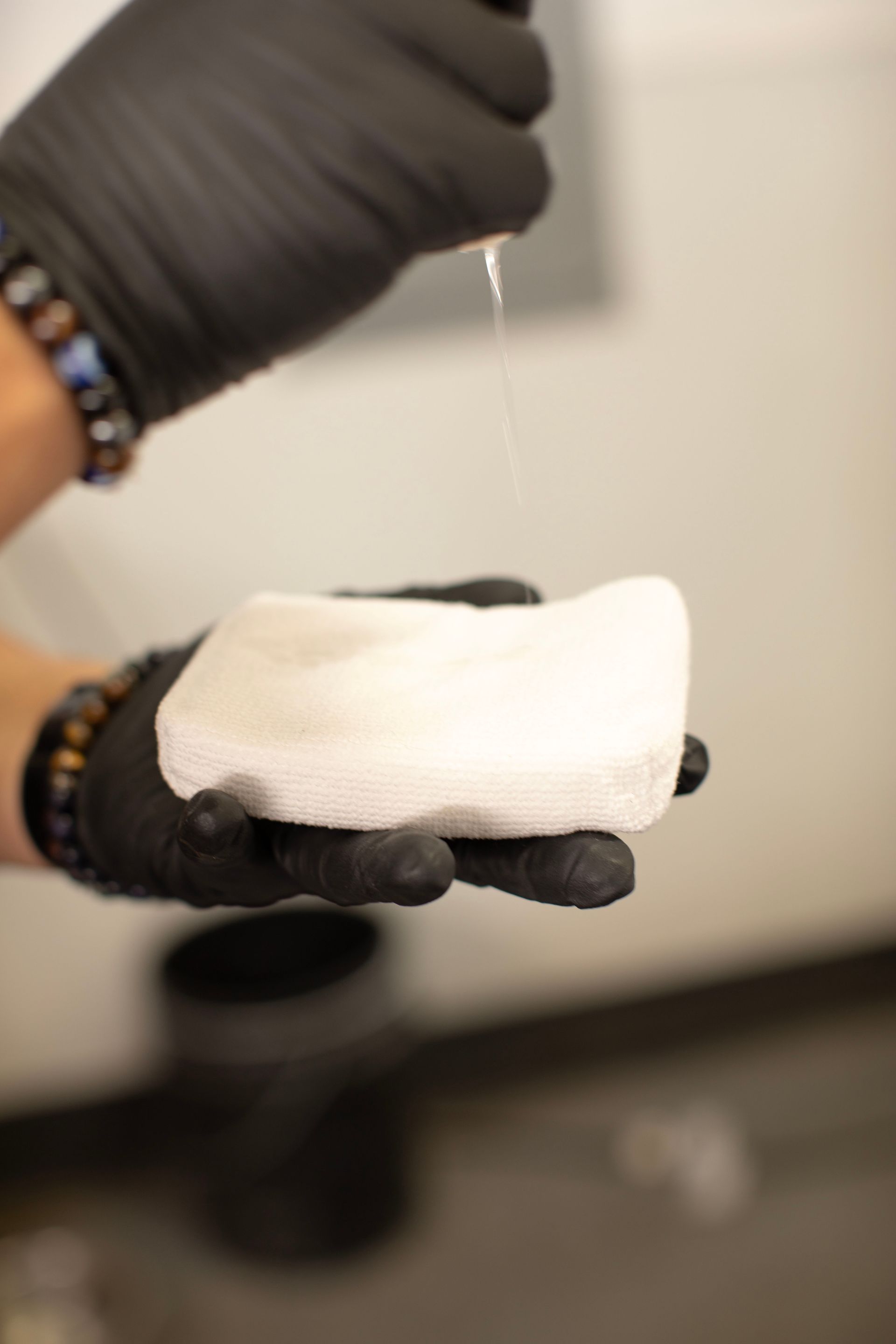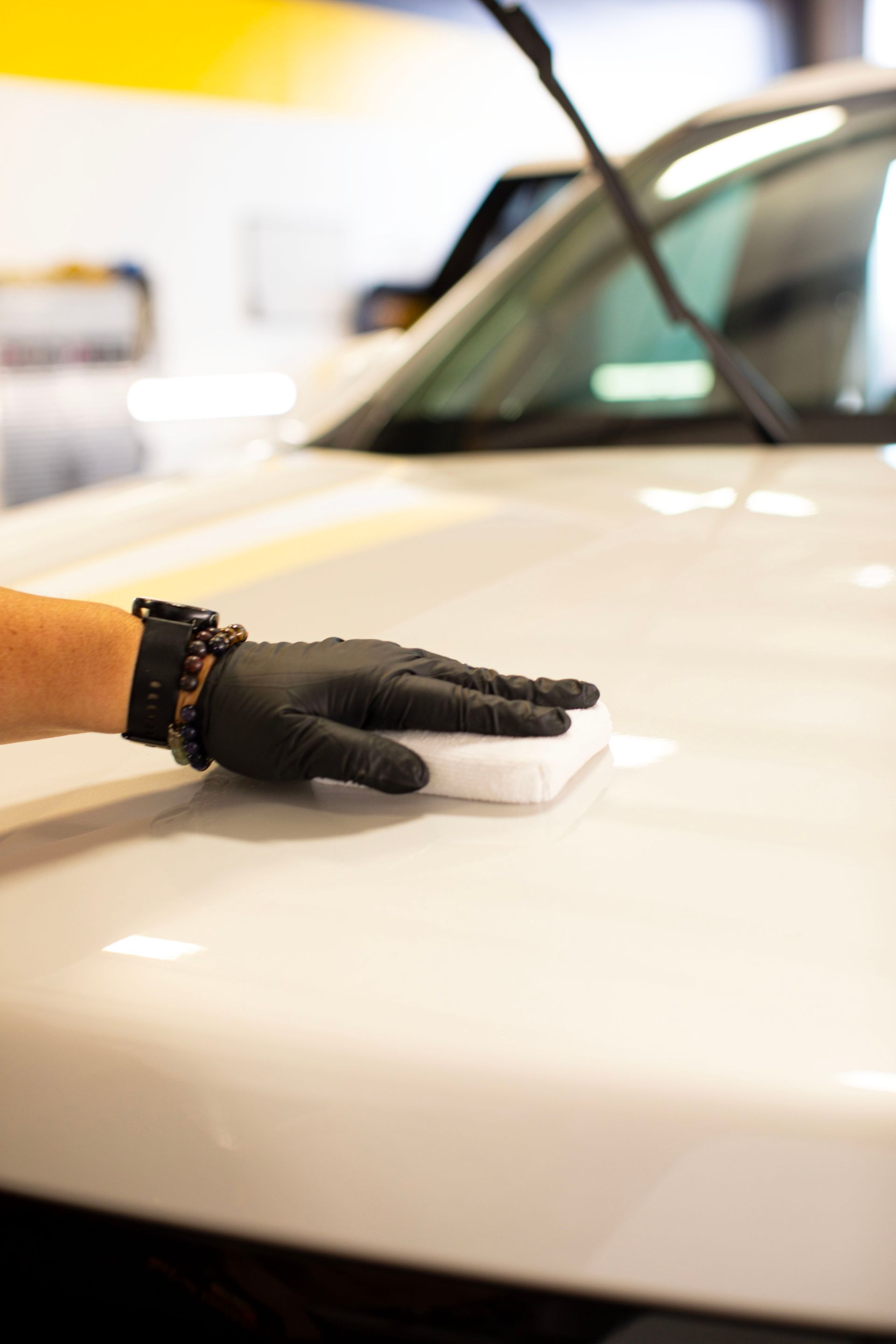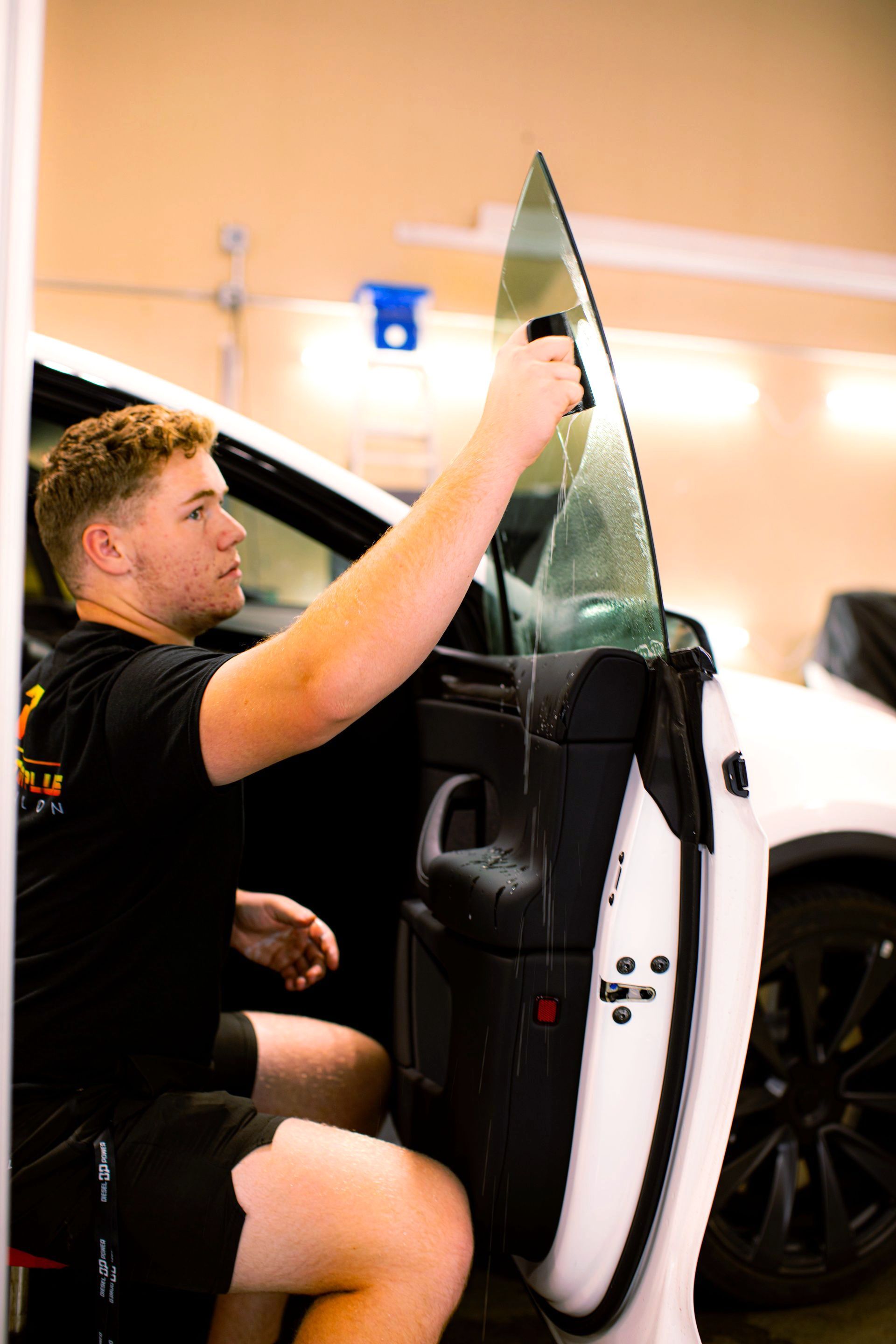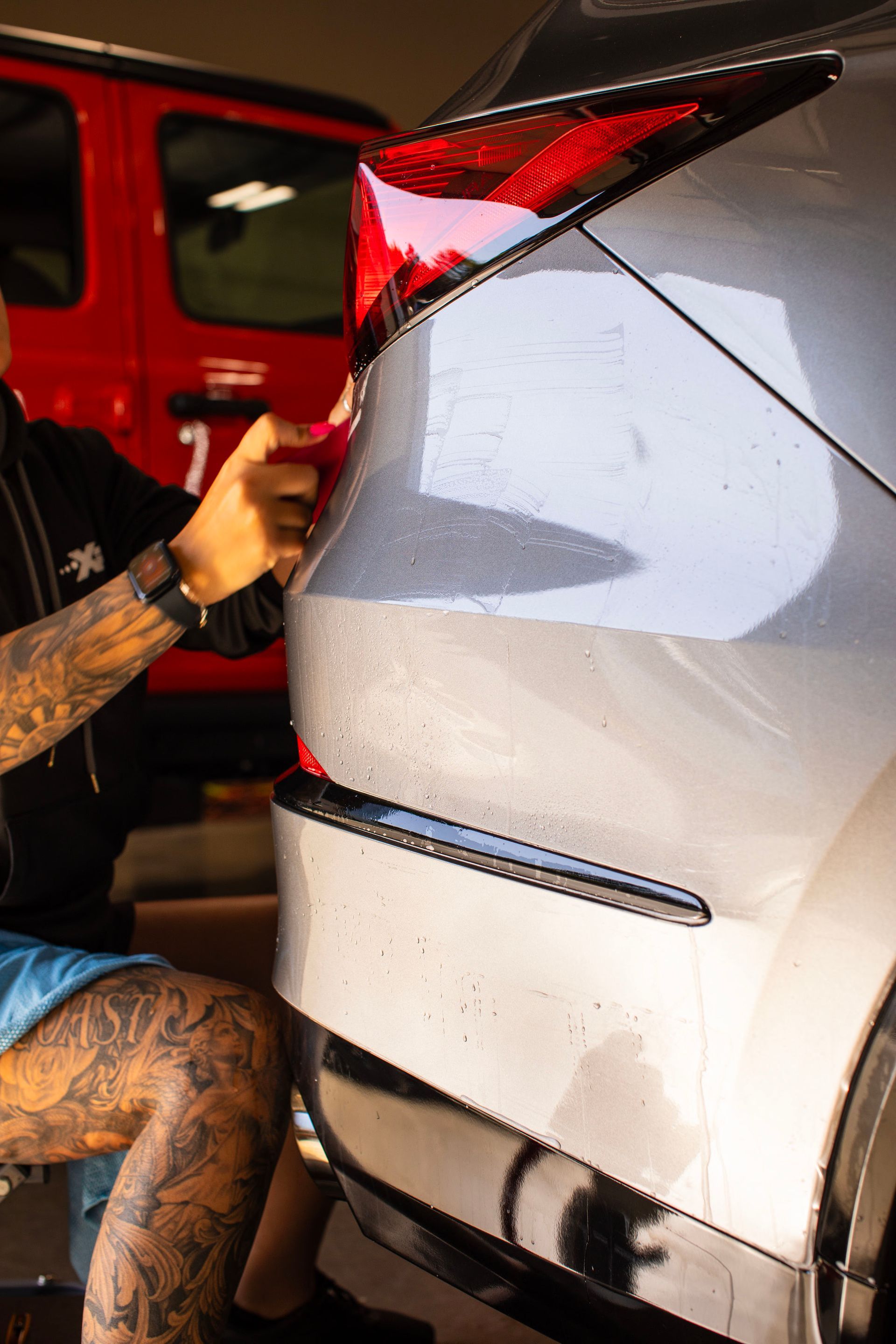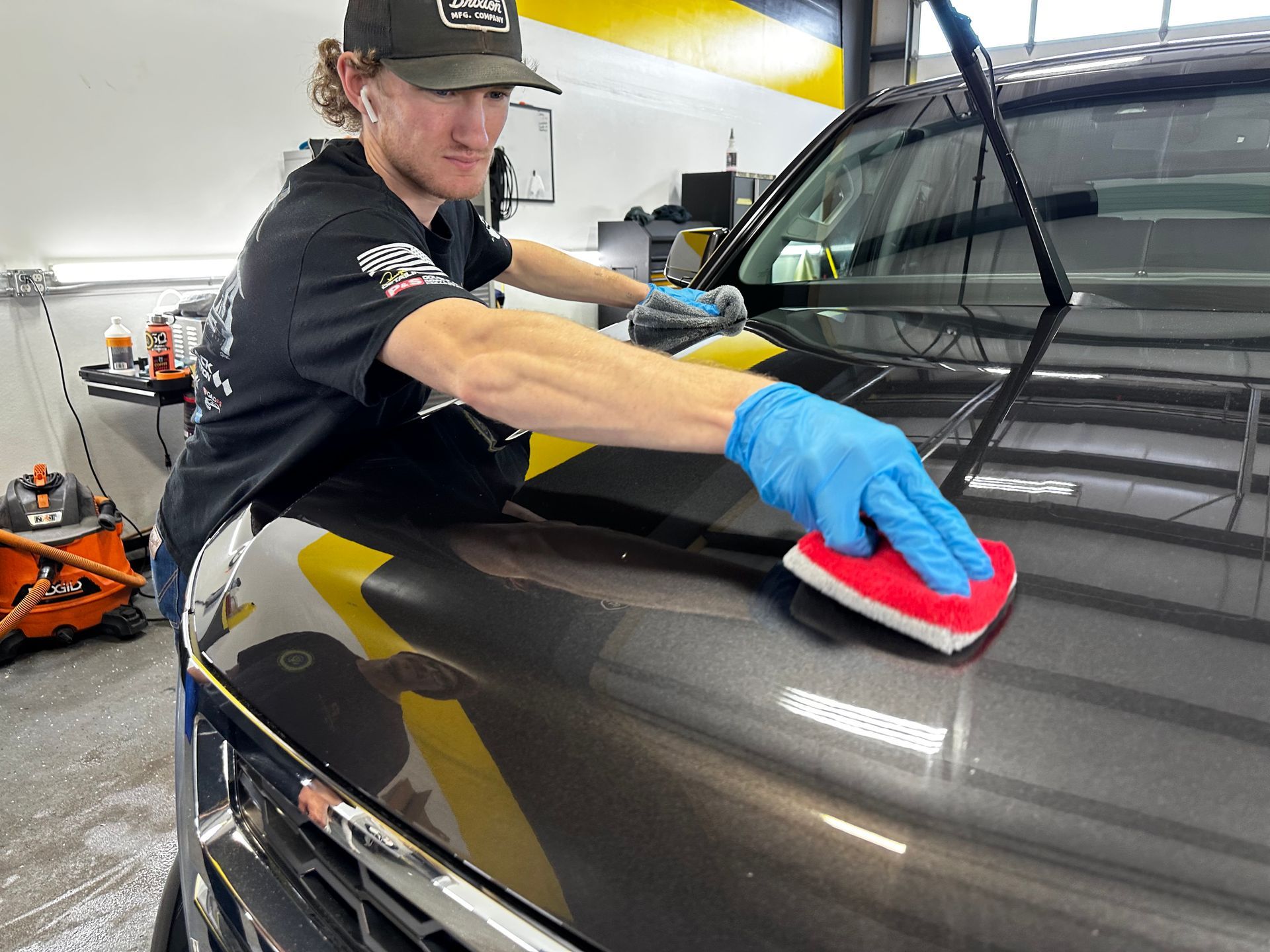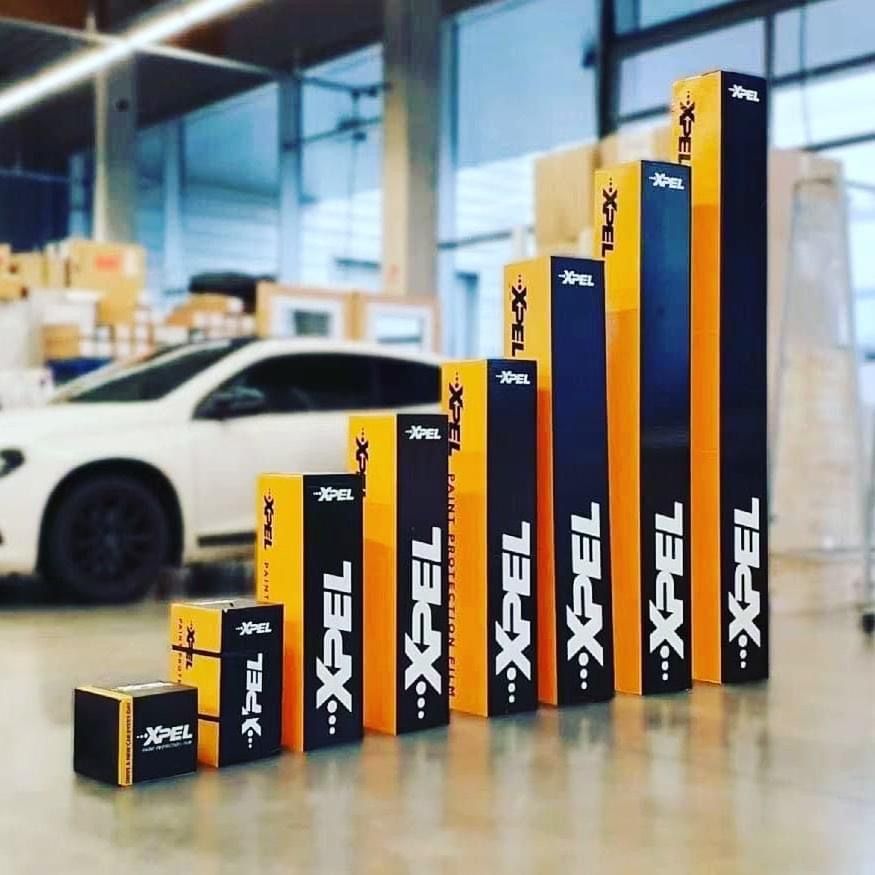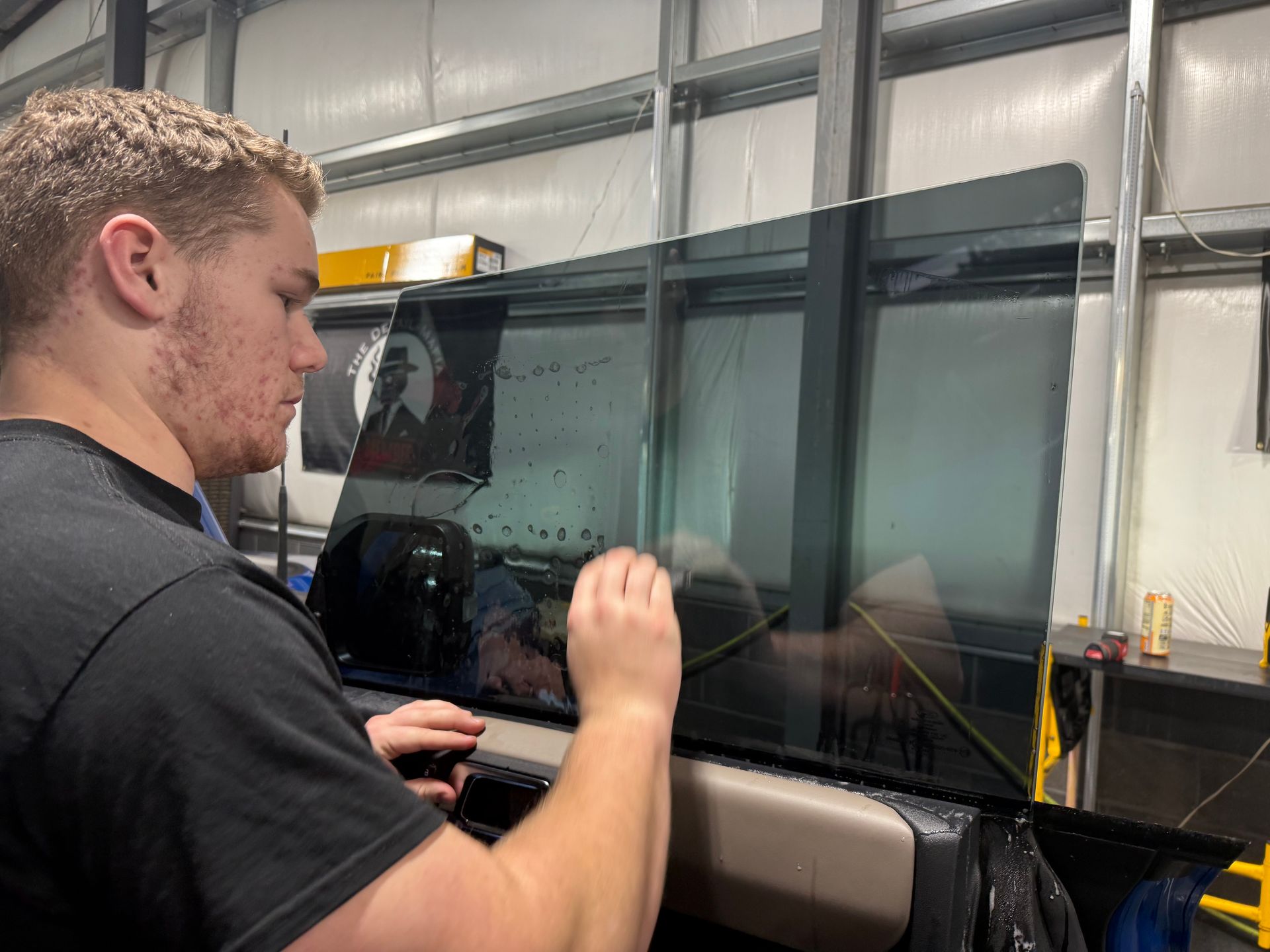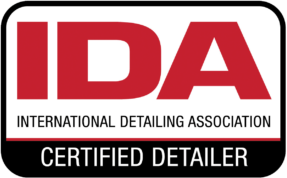The Benefits of Ceramic Coating for Cars: Protecting Your Investment
GET A FREE ESTIMATECeramic coating is like a super cape for your car. It shields the car's paint from things that can hurt it, like harsh sun rays, dirty stuff, and even rough water. Imagine UV rays trying to steal away your car's shine, but a ceramic coating stops them right in their tracks. It keeps your car looking new and shiny, as if it just rolled off the dealer's lot. And once applied, it feels like your car has a strong shield on, always ready for what comes next.
Ceramic coating is a must-have for cars because it provides long-lasting protection against external paint damage, such as fading, oxidation, and chemical staining. Additionally, it enhances the car's appearance with a glossy finish while making cleaning easier and faster due to its water-repelling effect.
Why Ceramic Coating is Essential for Cars
Imagine your car as a piece of fine jewelry. Just like you'd want to protect your precious gems from being tarnished or scratched, you’d also want to preserve the beauty and shine of your car's paint job. Ceramic coating acts as a shield against external hazards, such as UV rays, dirt, water, and chemicals, ensuring that your car continues to look as good as new for years to come. The exterior of your car is constantly exposed to the elements, enduring everything from harsh sunlight to acidic bird droppings and industrial fallout. These factors lead to the gradual deterioration of your car's paint, resulting in fading, oxidation, and staining. Ceramic coating essentially forms an invisible protective layer on the surface of your car's paint that shields it from these damaging agents.
To better understand this, think of ceramic coating as a suit of armor that fortifies your car's paint against enemies like dirt, grime, and chemical pollutants. The bond formed between the ceramic layer and the paint creates a barrier that fends off these assailants on a molecular level. By doing so, ceramic coating ensures that your car’s exterior is not only well preserved but also maintains its glossy appearance over time. As a result, you can drive your car or simply admire it in its immaculate condition, knowing that this crucial layer of protection is protecting its appearance and value.
Protection from Sun and UV Damage
Ceramic coating not only makes your car shine, but it also acts as a shield against the harsh effects of the sun. UV radiation is like a silent enemy that can wear down your car's paint over time. Let's see how ceramic coating comes to the rescue. Some might wonder, "Can't regular wax or sealant applications provide the same UV protection?" The answer lies in the durability and reliability of ceramic coatings. Unlike wax or sealants, ceramic coatings offer superior UV protection with a UV resistance rating as high as 9H, effectively shielding the paint from harmful rays. Studies have shown that cars with ceramic coating exhibit significantly less paint fading and discoloration compared to those without ceramic coating. This isn't just a matter of aesthetics; it's also about preserving your vehicle's value and prolonging its lifespan.
Ceramic Coating vs. Traditional Wax or Sealant Applications
Let's compare the effectiveness of ceramic coating with traditional wax or sealant applications in terms of UV protection:
- Longevity: In terms of longevity, ceramic coating provides long-lasting UV protection for up to 2 years. Traditional wax or sealants require more frequent reapplications.
- Level of Protection: Ceramic coating offers a higher level of protection due to its hardness and durability, while traditional wax and sealants are less effective at safeguarding against fading and discoloration.
- Maintenance: Ceramic coating eliminates the need for regular waxing and frequent car washes. On the other hand, traditional wax and sealants require more maintenance to uphold UV protection levels.
The benefits of ceramic coating become even more apparent when considering its ability to preserve your car's vibrant color and gloss for an extended period of time. The paint on your car is like its skin, and just like we use sunscreen to protect our skin from UV damage, ceramic coatings provide an extra layer of defense for your vehicle. In essence, if you want to maintain the beauty and integrity of your car's paint over time, investing in ceramic coating is a worthwhile choice. It’s not just about maintaining appearances; it's also about protecting your investment.
Increased Durability and Longevity of Ceramic Coating
Applying ceramic coating to your car is like giving it a suit of armor because it protects the paint from deterioration due to environmental factors and harsh conditions. When applied correctly, ceramic coatings form a strong bond with the surface, creating a protective layer that repels environmental contaminants, chemical stains, and minor scratches. This robust barrier prevents these harmful elements from affecting the paint directly, ultimately extending the lifespan of the paintwork. In practical terms, this means that your car's paint will stay looking fresh for longer, reducing the frequency of repaints and refinishing. The resilience of ceramic coatings essentially lessens the effects of wear and tear brought on by regular exposure to various threats like bird droppings, tree sap, road salt, and other airborne pollutants.
Additionally, it minimizes the effects of minor abrasions that would otherwise contribute to the degradation of the exterior appearance. The durability of a ceramic coating can also be attributed to its ability to withstand mechanical friction. This is particularly beneficial during routine washing or maintenance. While traditional wax coatings tend to wear off more quickly with each wash, ceramic coatings maintain their integrity over an extended period of time. As a result, this reduces the need for frequent reapplications or touch-ups. Imagine your car parked outside amidst a flurry of falling leaves or under the roosting spot of some friendly neighborhood birds. Think of the ceramic coating as an invisible shield that prevents these elements from leaving an indelible mark on your beloved vehicle.
Ultimately, ceramic coating offers a reliable safeguard for your car's exterior, ensuring that it remains in pristine condition for years to come. It's not just about aesthetics; it's about actively protecting your investment from potential harm. Incorporating ceramic coating into your vehicle maintenance arsenal isn't solely about protection; it also significantly enhances the overall visual appeal of your car.
The Aesthetic Appeal of Ceramic Coating
Imagine this: you're driving down a scenic road, the sun is setting, and your car is shining like a diamond. This isn't just a dream; it can be a reality with ceramic coating. This innovative protection method doesn't just shield your car from damage; it also gives it an extraordinary shine. The glossy finish that ceramic coating produces enhances the natural color of your car's paint, giving it a better-looking appearance than ever. We've all experienced how sunlight can reflect off a freshly waxed car, making it look brand new. Ceramic coating takes this concept to a whole new level. It creates a mirror-like reflection that transforms your car's appearance into something out of a car commercial.
Your vehicle will appear more vibrant and lively on the road. The shine provided by ceramic coating isn't just for show either; it reflects light away, minimizing the appearance of small imperfections and creating the illusion of flawless paint. But it's not just about catching attention—it's about keeping it. The glossy finish produced by the ceramic coating maintains its luster over time, ensuring that your car looks its best day after day, year after year. You know how people say that first impressions matter? Your car's appearance reflects on you in more ways than one. Whether you're going to work, meeting friends, or attending special events, driving a well-maintained and visually striking car makes a statement about your attention to detail and personal style.
Beyond mere aesthetics, the reflective qualities of ceramic coating serve practical purposes too. It repels dirt, grime, and water, making cleaning easier while providing continuous protection against environmental contaminants. When selecting a ceramic coating service, look for providers with proven expertise and high-quality products to ensure the best results for your car. So, if you're looking to elevate the visual appeal of your vehicle, make heads turn as you drive by, and maintain that "just left the showroom" look for years to come, ceramic coating is the way to go!
Application Process for Ceramic Coating
Applying a ceramic coating involves more than just a quick spray-on or wipe-off. The first crucial step is to thoroughly clean the vehicle's exterior. This isn't just a regular car wash; it requires meticulous attention to detail. Every nook and cranny needs to be free from dirt, debris, and residual traces of wax. Then comes paint correction, the process of removing imperfections from the paint, such as swirl marks, fine scratches, or water spots. Only then can the ceramic coating be applied. This meticulous preparation ensures that the ceramic coating adheres properly and forms a strong bond with the paint, maximizing its longevity and effectiveness. Professional applications are highly recommended for this very reason. Car detailing professionals have the expertise and specialized tools needed for a thorough and precise application.
Professional Application
When you opt for professional application at a reputable car detailing service, you're entrusting your vehicle to experts who understand the nuances of ceramic coating. The process typically involves multiple steps:
- Surface preparation: The vehicle undergoes a comprehensive wash and decontamination process to remove any impurities that could interfere with adhesion.
- Paint Correction: Skilled detailers carefully inspect the surface for imperfections and undertake corrective measures, ensuring that the paint is in optimal condition for coating.
- Application: The ceramic coating is layered onto the vehicle's exterior using specialized application tools to achieve even coverage and a uniform finish.
A professional's trained eye and experience are invaluable in ensuring each step is executed flawlessly, delivering a pristine result that enhances both the appearance and protection of your vehicle.
DIY Kits
For those who prefer a hands-on approach, DIY ceramic coating kits are available on the market. These kits often include all the necessary products—ceramic coatings, applicator pads, and microfiber towels—along with instructions for their use. While DIY kits offer an attractive cost-saving option, it's important to note that they require meticulous surface preparation and cautious application, just like professional processes. Without proper knowledge or skill, there's a risk of uneven application or even damage to your vehicle's paint.
Whether you choose professional application for its precision and expertise or opt for a DIY kit for its hands-on experience, understanding the nuances of the application process is key to unlocking the full benefits of ceramic coating for your vehicle.
Ceramic Coating: Resistance to Dirt and Heat
Choosing to apply a ceramic coating to your car is like giving it an invisible suit of armor. The protective layer formed by the ceramic coating works wonders at repelling dirt, moisture, and other environmental grime, ensuring that your vehicle maintains a cleaner appearance for longer periods of time. It's like creating a force field around your car that makes it easier to maintain cleanliness. Additionally, this hydrophobic characteristic means that water beads up and rolls off the surface effortlessly, taking any dirt or debris with it. The result? Your car stays fresher for longer—a welcome relief from frequent washes due to dust and grime buildup. For those who drive through less-than-ideal weather conditions or areas with significant air pollution, this feature alone can be a game-changer.
When it comes to protection from the elements, it's difficult not to appreciate the substantial heat resistance offered by ceramic coatings. With the ability to resist temperatures up to 1200°C, the coating serves as a shield against heat-induced damage that can affect your car's paintwork over time. This is especially valuable if you live in regions with scorching summers or regularly park your car under the sun. By actively repelling dirt and moisture while providing robust heat resistance and safeguarding against heat, ceramic coating offers a comprehensive form of protection for your vehicle that contributes significantly to both its aesthetics and longevity on the road. With the ceramic coating acting as an invisible defender for your car, you're not just protecting its external appeal but also preserving its value in the long run.
Trusted Ceramic Coating Service in Redmond, OR
Transform the way you protect and showcase your vehicle with Perfection Plus Auto Salon, the trusted provider of ceramic coating services in Redmond, OR. Elevate your car's appearance and durability with our premium-grade ceramic coatings, meticulously applied by our expert technicians. Whether you're aiming for a showroom shine or seeking unparalleled protection against the elements, Perfection Plus Auto Salon has you covered. Say goodbye to frequent waxing and polishing routines, and hello to long-lasting brilliance that turns heads wherever you go. Don't settle for anything less than perfection; schedule your ceramic coating appointment with Perfection Plus Auto Salon today and experience the difference for yourself! Call us at
(541) 598-6193!
